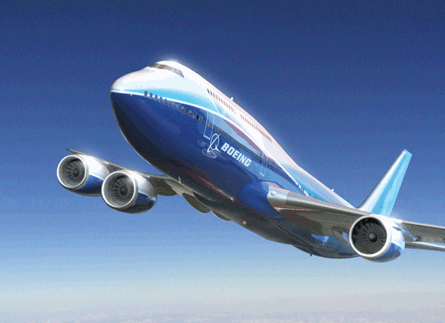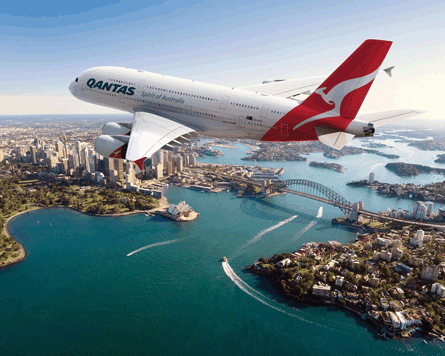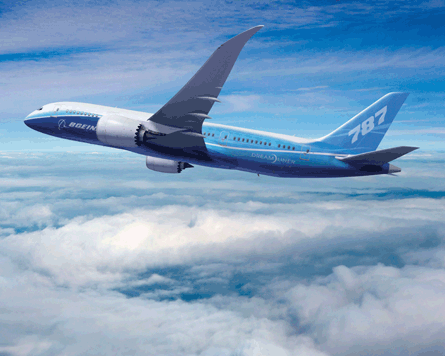A380/747-8: Big planes, big problems
Max Kingsley-Jones in London
After sluggish sales in 2008 the ultra-large airliner models face even bleaker prospects for new orders in 2009. But of more immediate concern to Airbus and Boeing is the need to get to grips with production issues that have dogged both their programmes.
Boeing, which has accumulated orders for 106 747-8s (78 -8F freighters and 28 -8I passenger models) since launching the General Electric GEnx-powered family three years ago, should now be flight-testing its 747-400 successor. But after a series of schedule delays - and two changes of programme leadership within 18 months - assembly of the first 747-8F (the lead variant) is still not complete and first flight is at least three to four months away. Deliveries to launch customer Cargolux, which were due to begin late this year, will now start no earlier than mid-2010.
Boeing blamed the slip on a combination of issues including supply chain problems, engineering requirements (including the need for revisions to the wing design), the 787 crisis and its machinists' strike.
 |
|---|
"After we got to the 90% release milestone of engineering drawings in early third quarter of 2008 and started to begin production we realised we weren't getting the parts in on time. A lot of [the issues] came home at that point," said 747 chief engineer Michael Teal when the slip was announced last year.
Airbus, meanwhile, has just reached the 200-order threshold for the A380 and has delivered 13 aircraft since the first went to Singapore Airlines in October 2007. But it is still battling with the overspill from production issues that have dogged the programme. "Production is not fully under control, we've still got a bit of work to do," says Airbus executive vice-president programmes Tom Williams.
Output was due to rise from 12 aircraft in 2008 to 21 this year (having been reduced last year from the earlier target of 25) and this has since been revised further downwards to 18 as assembly lines struggle to transition from the almost hand-built process used for early aircraft to series production, dubbed "Wave 2".
This year the bulk of A380 deliveries will go toexisting operators Emirates, Qantas and Singapore Airlines, with Air France due to become the fourth customer to receive the giant, at year-end.
 |
|---|
©Qantas |
The near-term commercial prospects for both the A380 and 747-8 look difficult, with few if any new customers on the horizon. Indeed Airbus' chief salesman John Leahy predicted in January that A380 sales would be flat this year - in the order of 10 aircraft.
Until recently All Nippon Airways had been the most serious new-customer prospect for an ultra-large airliner deal. However, in December last year the airline "suspended" the actions of its large aircraft selection committee and said that any deal would have to wait "until the market conditions look right".
The lack of any serious new sales campaigns might be a pain for the A380 sales team, but it could be far more serious for the 747-8, which accrued just three orders in 2008. To make matters worse, Boeing has managed to land only one airline customer for the -8I passenger version - Lufthansa - which became launch customer for the 450-seater in 2006.
 |
|---|
click on the image for the fullsize future aircraft timeline |
Like the freighter, the -8I has been subject to schedule slips with Lufthansa's first delivery sliding from mid-2010 to the second quarter of 2011. In the meantime, the market for the freighter version - which is by far the stronger of the two variants commercially - has disappeared as the cargo industry faces a crisis of rapidly declining demand.
In the wake of the 747-8 delay - and the related $685 million charge - Boeing chief executive Jim McNerney hinted in January that continuation of the programme should not be seen as a foregone conclusion: "We still see a viable business proposition here," he said. "Now obviously if we ever got to a point where we didn't, we'd have to work with our customers to come up with another answer."
Faced with these development and commercial issues, Boeing is understood to have privately studied various options for the programme, including terminating the 747-8I and running the 747-8F as a standalone.
In contrast to the current woes at Boeing, Airbus has enjoyed a period of good publicity as the A380 launch airlines have experienced a relatively trouble-free introduction and expanded their networks with little drama.
787/A350: The composite twins
Jon Ostrower in Washington
The commercial aerospace industry is finding that a technology bottleneck runs through the mid-size long-range widebody aircraft market.
For Boeing, two years of production and design problems have plagued its flagship 787 programme resulting in expansion disruptions for airlines. Yet on a deeper level, development of both larger and smaller aircraft is eagerly awaiting the answers that will come out of the Dreamliner's experience.
The lessons learned by airlines operating the 787, which is expected to fly in the second quarter of this year and enter service with Japan's All Nippon Airways in February 2010, will validate or condemn the extensive use of composite technology. Boeing has attempted to answer all these questions in advance to the best of its ability, but real-world operation will invariably reveal unanticipated strengths and weaknesses in the technology.
With significant financial and engineering resources occupied on preparing the 787 for its first flight, certification and entry into service, the airframer has neither significant staff nor capital to devote to the future of the large-twin and narrowbody markets.
 |
|---|
As a result, Airbus is waiting on the 787 to fly to inform its own ongoing design and planning for its slightly larger composite A350 XWB, which is expected to make its first flight in late 2011 followed by a 2013 entry into service with Qatar Airways. The cyclical planning logic then returns to Boeing's doorstep as it waits for the larger 350-seat A350-1000 and 314-seat A350-900 performance expectations to firm up so the US airframer can decide how to proceed with its 301 to 365-seat 777 programme.
On the smaller end of the aircraft spectrum, narrowbody replacement appears to be pushed out beyond the next decade as robust build rates and backlogs on the Airbus A320 and Boeing 737 continue, though the material of such a replacement for Airbus and Boeing remains undefined. The manufacturers have each discussed openly that the benefits of composite technology in low-cycle long-haul operations may not carry over to high-cycle short-haul operations.
In the near-term, the question for Boeing is whether or not it can deliver the high performance expectations it has set for itself with the 787. Boeing has always touted a 10% better cash mile cost over the 767, 20% improvement in fuel efficiency and 30% savings in maintenance costs. Many of these ambitious performance considerations have been hit by reductions in the projected range of the aircraft from between 8,000nm and 8,500nm to between 7,650nm and 8,200nm, stemming from unanticipated weight gain and speculation regarding lagging fuel burn targets.
Both Boeing and the 787's engine suppliers, General Electric and Rolls-Royce, are undertaking aggressive weight reduction and engine performance improvement that will be incorporated by entry into service as well as later block-point improvements.
Some airlines have begun to publicly speculate as to whether or not the 787 will meet performance targets. For example, Aeromexico chief executive Andres Conesa recently expressed fears that the five Boeing 787-8s his airline has ordered may fail to meet original performance specifications including the ability to operate nonstop flights from Mexico City to Asia.
Prior to the global economic collapse, both Boeing and Airbus accumulated orders for their respective mid-size long-range widebody jets at an unprecedented pace, garnering 878 and 483 firm orders respectively.
 |
|---|
Airbus may regard its 2013 entry into service date for the long-range twin as an unintentionally shrewd move that positions its first deliveries in line with an upswing for this inherently cyclical industry. Yet, Boeing's almost two-to-one 787 backlog advantage provides an example of aggressively tackling the replacement market of its own predecessor ahead of its chief competitor.
Whichever product claims the title of market leader, both will be instrumental for airlines with global long-haul ambitions. The A350 and 787 will hold an overpowering advantage over the ageing A330 and 767 as they approach the mid- and later product life.
Open rotor: Engines of the future
Niall O'Keeffe in London
Dramatic performance improvements are required of the next generation of narrowbody aircraft, and open rotor engines have been mooted as the means of delivery.
CFMInternational, a GE-Snecma joint venture which provides engines for both the Airbus A320 and Boeing 737NG families, is pursuing two programmes ahead of those families' replacement. LEAP-X, an advanced ducted turbofan due for certification in 2016, is targeted to deliver a 16% fuel-burn reduction "relative to today's best of CFM", while an open rotor design, due by "the end of next decade", will deliver a 26% reduction, according to the manufacturer.
"Given the potential fuel-burn improvement, we just can't afford not to go on investing and studying the open rotor potential," says Ron Klapproth, LEAP-X programme manager. In Klapproth's view there is a natural overlap between CFM's two programmes. "If you've got a great open rotor but you don't have a world-class core, you're not going to meet the kind of performance goals that we set out."
From April, GE and NASA will conduct wind tunnel tests of counter-rotating fan-blade systems at the latter's Glenn Research Center in Cleveland, Ohio. These tests are geared toward noise limitation, a significant hurdle in open rotor design due to the absence of a fan case. "By looking at variations in blade number and blade diameter and spacing, as well as advanced shaping of the airfoils, we are pretty optimistic that we're going to be able to make significant improvements over what we flight-tested back in the late 1980s," says Klapproth, referencing prior research into unducted rotor efficiency.
Among airlines, the open rotor concept has a vocal supporter in the shape of easyJet, which in June 2007 proposed an open rotor-powered "ecoJet" as a solution to aviation's impact on the environment. "If you're going to spend $10-$15 billion dollars on a new plane, it's got to be considerably better," says easyJet strategic planning manager Hal Calamvokis. "If you don't go open rotor you don't really deliver those significant benefits." By this reasoning, the required performance gap simply cannot be bridged with crew productivity and maintenance cost improvements alone.
|
|---|
©easyJet |
The potential fuel savings steer Calamvokis toward open rotors. "The price of jet fuel is not going to go down in the long term and in the long term carbon will be priced in some way, shape or form," he says. "For this generation of aircraft, it's fuel burn that we should be solving for."
On the noise issue, Calamvokis predicts that open rotor-powered narrowbodies will be quieter than the aircraft they replace. He cites the investigative work of the Institute of Sound and Vibration Research at the UK's University of Southampton. Even the lower speed of open rotor-powered aircraft (Mach 0.75 against the current narrowbodies' Mach 0.78) is not, in Calamvokis' opinion, a major drawback. "As the price of fuel goes up we spot rational airlines, who are incentivising their crews correctly, flying slower," he says, adding that some of the time lost in cruise can be clawed back through faster climb-out and descent.
But enthusiasm for open rotor designs is not shared by all. "Initial hopes that open rotors would be as fast as turbofans and have better fuel consumption have proven unfounded," argues Alan Epstein, vice-president of technology and environment at Pratt & Whitney, which plans to develop a version of its geared turbofan (GTF) engine for the next generation of narrowbodies. "Open rotors' specific fuel consumption per pound of thrust might be lower, but this is misleading," says Epstein. "The fuel burn required to push the airplane is what's importantOpen rotors will add tonnes of extra weight." He insists that the GTF represents a "faster and enormously quieter" option.
CFM's Klapproth offers a very different assessment. "We see no real advantage to a geared turbofan configuration, but we see some real headwinds in terms of operational reliability, particularly," he says.
Rolls-Royce has kept its cards close to its chest, but battle lines are clearly being drawn in the race to power future narrowbodies. It is now the task of Boeing and Airbus to decide which option is best placed to deliver a bold leap forward. "It's actually possibly quite fortunate that given the 787, A350, etc, they're just not physically capable of doing anything quickly, which gives us time to think radically," says easyJet's Calamvokis.
Narrowbody replacement: Receding pressure
Mary Kirby in Philadelphia
Less than two years ago, airlines seemed largely united in their demand that Airbus and Boeing accelerate plans to develop single-aisle replacement aircraft. But the pressure on airframers has subsided, for now, as carriers focus on the task of weathering a global economic crisis of epic proportions. Airlines ended 2008 with a $5 billion loss, and expect a further $2.5 billion loss this year. “To better illustrate what this means, the industry-wide top line revenues will fall by $35 billion, or 6.5%. The industry is getting smaller. Airlines are cutting capacity,” says IATA director general Giovanni Bisignani.
With capacity reduction comes delivery delays and order cancellations. Indeed, Airbus and Boeing started the year with net orders in deficit after a raft of cancellations. As such, the clout wielded by airlines has diminished.“The only way airlines can get that leverage back is if the Bombardier CSeries becomes a big success,” says Teal Group vice-president, analysis Richard Aboulafia.
 |
|---|
The Pratt & Whitney geared turbofan (GTF)-powered CSeries has just received a key boost after Lufthansa’s board in March approved an order for 30 of the type, firming its 2008 initial commitment for up to 60 of the new jet. But other firm deals for the aircraft have not yet surfaced.
“Airlines still need to replace aircraft in 2013 – that’s the year CSeries enters service. What we are finding, understandably, is that given the current financial situation many airlines are focused on short-term issues rather than completing their fleet negotiations for the long term,” says Bombardier.
If Airbus and Boeing feel threatened by the 110/130-seat CSeries, they are not showing it. Neither of the two firms has defined replacement plans for the A320 and 737.
The lack of clarity has not slowed interest from engine makers, which are working to introduce significantly more efficient products. But, as it stands today, no new airframe is expected to appear until at least the last few years of the next decade.
Airbus has been clear on this point. While remaining closed-mouthed as to how it aims to keep its A320 family competitive in the interim, the European firm’s chief operating officer John Leahy says he does not expect a replacement aircraft to come available before 2020. That gives Bombardier “a competitive advantage to be sure, particularly as CSeries is the only current family of aircraft designed specifically for the low-end, single-aisle market”, says Bombardier.
The company estimates the needs of the 100- to 140-seat commercial aircraft market to be 6,300 aircraft, representing more than $250 billion over the next 20 years. Should the CSeries fail to gain traction, however, the industry “should probably mourn rather than cheer”, says Aboulafia, as it will give airframers little incentive to move forward their timelines for replacement narrowbodies, especially in light of today’s “major impediments” to such development – slack passenger demand, cheap fuel and pressured research and development budgets. “This is going to have a damaging impact on the arrival of new technology,” he says.
Air France-KLM has been trying to persuade Airbus and Boeing to launch a new narrowbody for years. KLM senior vice-president for fleet development and aircraft trading Jan Witsenboer late last year urged for quicker progress in their narrowbody replacement projects, saying: “We wouldn’t use an interim solution. We want a definite solution, preferably much earlier.”
Source: Airline Business
























